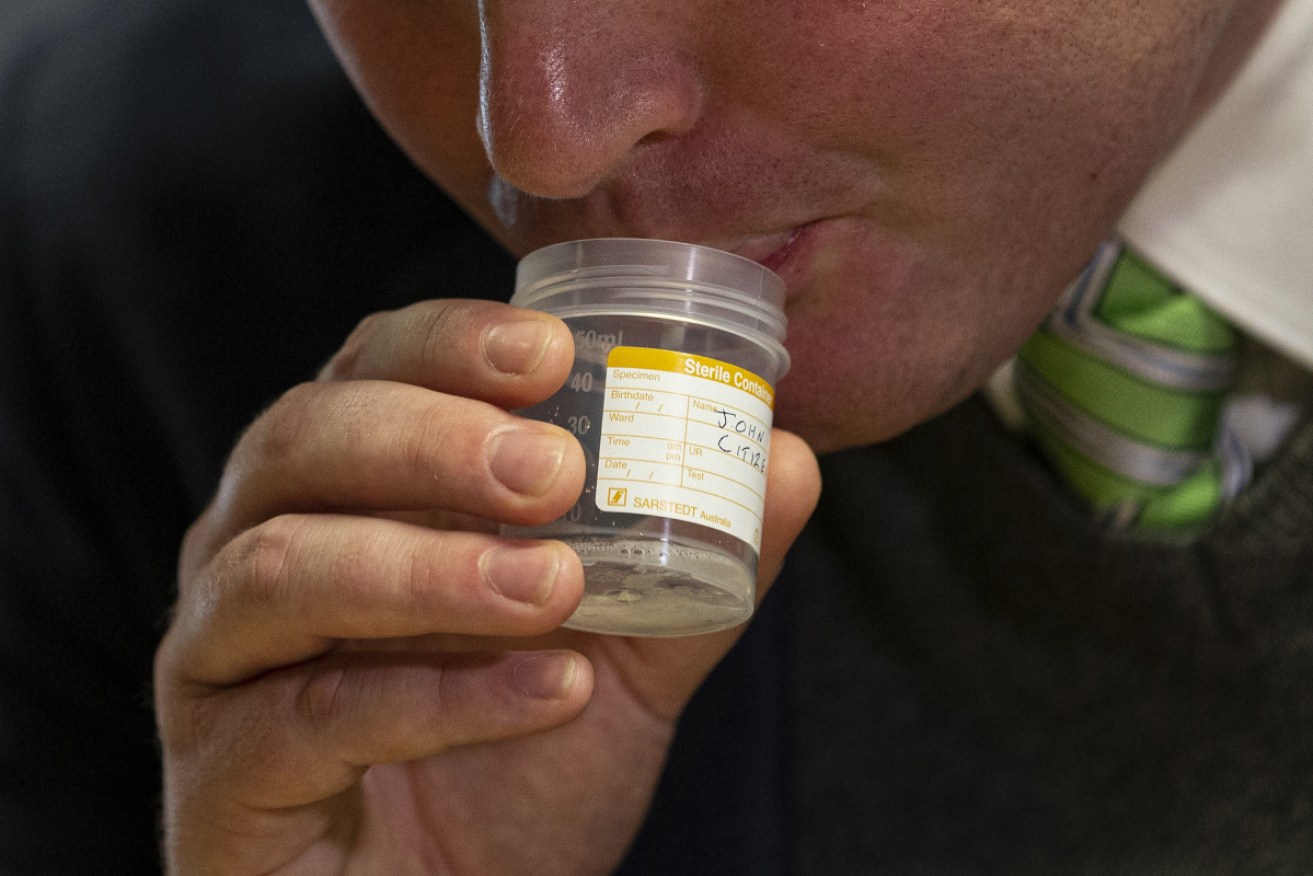Breakthrough: Australian researchers unveil five-minute COVID saliva test

The new COVID-19 saliva test is as simple as spitting into a cup. Photo: AAP
Australian scientists have developed a saliva test that can detect COVID-19 in five minutes.
The portable testing device uses infrared light to detect the virus in saliva samples, and scientists say it could be capable of screening 5000 people a day.
In preliminary testing, the screening device was able to correctly detect the virus in 27 out of 29 patients.
But the research, led by Monash University and the Doherty Institute, is only up to ‘proof-of-concept’ stage, so it may be some time before ‘brain tickler’ nasal swabs are no longer needed.
The breakthrough device uses infrared light to interact with the vibrations of molecules in saliva samples, generating a unique chemical fingerprint which is then analysed using machine learning algorithms.
Because the device works so quickly, it is hoped it can be used for screening at airports, stadiums, universities and schools, as well as to triage patients for further COVID tests.
According to Professor Bayden Wood from Monash University, the device is fast, cheap, and easy to use, and reduces the infection risk for patients and healthcare workers.
Professor Wood did much of the initial work on the device at the Australian Synchrotron in Melbourne.
Professor Damian Purcell from the Doherty Institute said the new test avoids the discomfort of nasal swabs.
Proven technique
“A person can contribute the sample by simply dribbling into a sterile container,” he said on Friday.
“The result can be derived in less than five minutes and a rapid result minimises the delay in determining if quarantine is required, therefore minimising the risk of further spread of infection.”
Similar infrared techniques have been used in the past to detect malaria and hepatitis.
The research was carried out with the University of Melbourne, The Royal Melbourne Hospital, the Dublin Institute of Technology, the University of Strathclyde, Elettra-Sincrotone Trieste, and the Area Science Park Trieste.
The findings were published on Friday in the leading German chemistry journal, Angewandte Chemie.
-AAP








